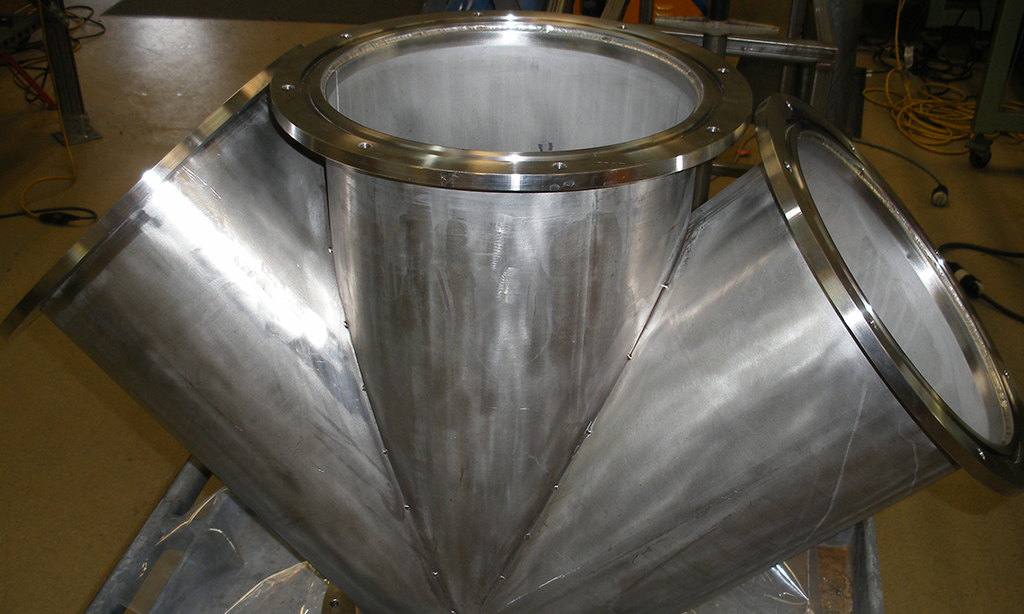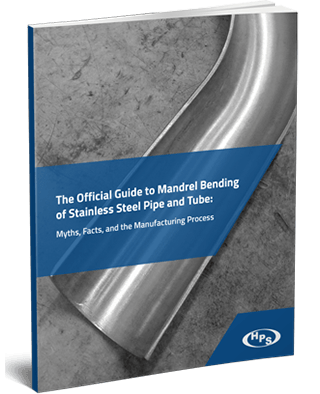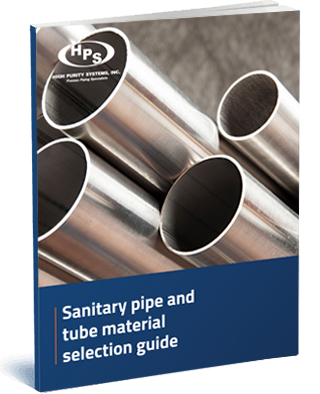Ordinary solutions are rarely adequate to solve unique challenges.
It hits especially close to home for aerospace firms whose critical research and development efforts push the envelope daily. Developing new parts and components that advance their work comes with the territory.
When a longtime customer realized that a custom-fabricated component would dramatically enhance performance of a system in one of their labs, they turned to someone they trusted.

The Challenge
Our customer is an American aerospace firm with significant research and development capabilities. At issue was a large thermal vacuum chamber the customer used to simulate an orbit environment. Observing how prototypes behave in their intended service environment is a crucial stage in developing satellite missions.
At approximately 30 feet in length and 10 feet in diameter, the original design of the chamber included four feed-through ports connected to the chamber via flanges.
But the customer realized that additional feed-through to the chamber would increase the productivity of the tests conducted inside. It would make the customer’s tests more effective and efficient, potentially providing better test results and quickening mission development timelines.
The challenge was to multiply the chamber’s feed-through capacity while retaining the original four main ports.
The strategy
After discussing the circumstances with the customer, our teams agreed the best way forward was to modify the existing ports by adding two branch lines to each existing main line. This would triple the feed-through to the chamber.
Port multipliers aren’t novel, but the customer’s unique project requirements demanded a much larger multiplier than had existed up to that point.
In close collaboration with the customer, our fabrication team got to work modeling the component. Using computer-aided design (CAD) software, we developed a template such that two 12-inch branch lines would be mitered and stabbed into the single central 12-inch line to create the wye. The customer’s design further called for 12-inch flanges on each of two branch lines and on both ends of the existing central line.
All piping and flanges on the custom fittings were made of 316 stainless steel. The bolted-on ports where the feed-throughs attach were made of 6061 T6 aluminum. Due to its shape, the parts took on a nickname: “The tri-wye”—even though it looks more like a Greek Psi (ψ).
Ensuring the pieces fit together proved to be the biggest challenge on the project.
To secure a snug fit, sealing surfaces had to be exceptionally flat and smooth. With our precision machining capabilities, we achieved a total face flatness of just ±0.02 inches. Seal surfaces were ground to a 25Ra (roughness average) sealing finish. The branch lines were level within one-half of one degree.
Next, we hand-fitted the branches and tacked them into place. Then, we welded the branches onto the central lines from the inside via TIG (Tungsten Inert Gas) welding.
Because components within high vacuum systems must be free of contaminants and oil, our team passivated, thoroughly cleaned and dried the interior weld surfaces of the multipliers. The tri-wyes were then shipped to the customer.
The result
Upon installation, the tri-wyes worked flawlessly. The immediate increase in access to the vacuum chamber boosted feed-through and gave the customer an enhanced ability to monitor the conditions inside the vessel.
This project was successful for two reasons. First, our skilled fabricators understood the customer’s objectives and had the resources they needed to do their best work. Second—and maybe more importantly—was our existing relationship with this customer. It’s a tough road earning customers’ trust, but when it culminates in project collaborations like the tri-wye, it’s worth the effort.
What challenges are you facing in your laboratory or production facility? Maybe you have process improvement ideas but need a partner to help work out the technical details and model a solution. If so, we should talk.
Contact High Purity Systems
Have a question about a piping challenge? Want to discuss an upcoming project? Let’s talk.






